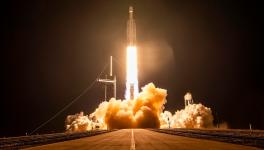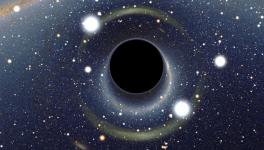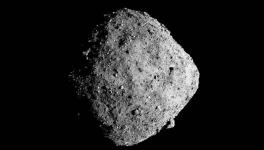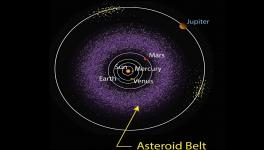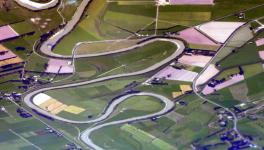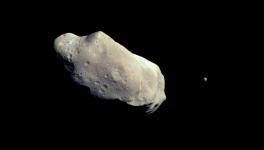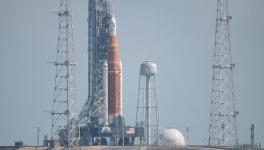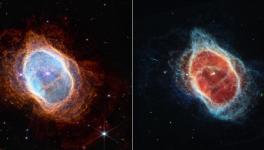NASADART Spacecraft Reduced Asteroid’s Size,Shrank Orbit
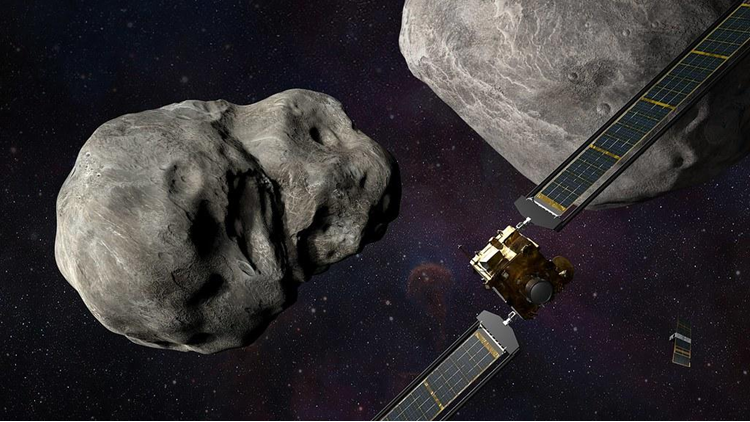
Image source: Flickr. Used for representation only.
NASA’s DART (Double Asteroid Redirection Test) spacecraft, which aimed todeviate an asteroid from its trajectory, was an attempt to test whether any object moving towards the earth could be deviated to avoid a collision. This was popularly termed a planetary defence mission.
Last September, the spacecraft made a kinetic impact on the asteroid Dimorphos, which orbits the larger asteroid Didymos. Thespacecraft targeted this binary asteroid system for its testing.
Now, a series of five types of research published in Naturehas revealed several aspects of the kinetic impact that DART’s collision had on Dimorphos. Scientists have sort of deconstructed the collision’s impact and what happened after it.
In one of the five research led by Cristina A. Thomas, of Northern Arizona University, USA, scientists found that the DART’s kinetic impact on Dimorphos shrank its orbit around Didymos. According to the researchers, Dimorphos completes an orbit within 33 minutes less than it used to before DART impacted it. Thespacecraft, the size of a golf cart, collided with the asteroid,which is equal to the size of the great Pyramids.
The shrinkage in the asteroid’s orbit suggests that it will be possible to deviate any dangerous asteroid heading towards the earth with potentially harmful effects, scientists claimed.
In the second research, led by R Terik Daly, of Johns Hopkins University Applied Physics Laboratory, USA, scientists studied the asteroid’s trajectory with photographs of its surface just before DART hit it.
The spacecraft was moving at a speed of more than six km persecond and one of its solar panels, according to the researchers, was the first part to hit the asteroid. The solar panel hit a 6.5 metre-wide boulder of the asteroid. Moments after the first impact, theDART’s main body collided with the asteroid’s rocky surface next to the boulder. Notably, the spacecraft was blown into pieces.
The other important aspect revealed by scientists was that the asteroid lost its sizeable mass due to collision.Scientists estimate that the impact ejected nearly a million kgs of rock from Dimorphos, which had a mass of about 4.3 billion kgs before the collision.
The rocky debris ejected from Dimporphos formed a tail that elongated for thousands of kms behind it. The Hubble telescope, along with various others, monitored the trajectory and the tail’s evolution. The debris tail evolved and changed under Sun’s pressure.
The third research, led by Jian Yang Li, of Planetary Science Institute, USA, suggested that Hubble’s data revealed a second tail that disappeared 18 days after the impact.
NASA aimed to deviate Dimporphos, which is around 151 metre wide, from its orbit to such an extent that astronomers and scientists can spot it with analysis of the brightness of the Dimorphos-Didymos asteroid pair over time with the help of telescopes. Notably, neither of the asteroids poses any threat to the earth.
In the fourth research, scientists deciphered how Dimorphos changed its momentum four times more after the impact. DART hit at a spot away from the centre of the asteroid, which according to scientists, maximised the impact.
Along with it, a large amount of rubble moved outwards from the point of impact. Scientists opine that the momentum increased due to recoil from the rubble stream and deviated Dimorphos from its earlier trajectory.
Apart from the impact of collision, scientists are also trying to find out more about its geology, physics and chemistry. A group of scientists has analysed the changes in the asteroids during, before and after the impact.
In the fifth research, researchers observed through telescopes that the asteroid’s rocks appeared more red immediately after the impact. Using infrared Telescope Facilities in Hawaii, Thomas’s team found that the colour changed into blue.
“We think this is likely because we have a lot of material from Dimorphos thrown off. The impact blasted through the asteroid’s weathered interior and exposed part of its insides, making the asteroid appear temporarily blue a few hours after impact,”Thomas said.
Further research is expected and clearer pictures of the impact’s effectsare expected by 2026 when European Space Agency (ESA) craft Hera will arrive at Dimorphos. Scientists aim to find out more about the impact crater created by DART’s collision with Dimorphos. In the meantime, scientists would continue to observe the asteroids until they become too faded to be observed by telescopes in their journey away from the earth.
Get the latest reports & analysis with people's perspective on Protests, movements & deep analytical videos, discussions of the current affairs in your Telegram app. Subscribe to NewsClick's Telegram channel & get Real-Time updates on stories, as they get published on our website.









